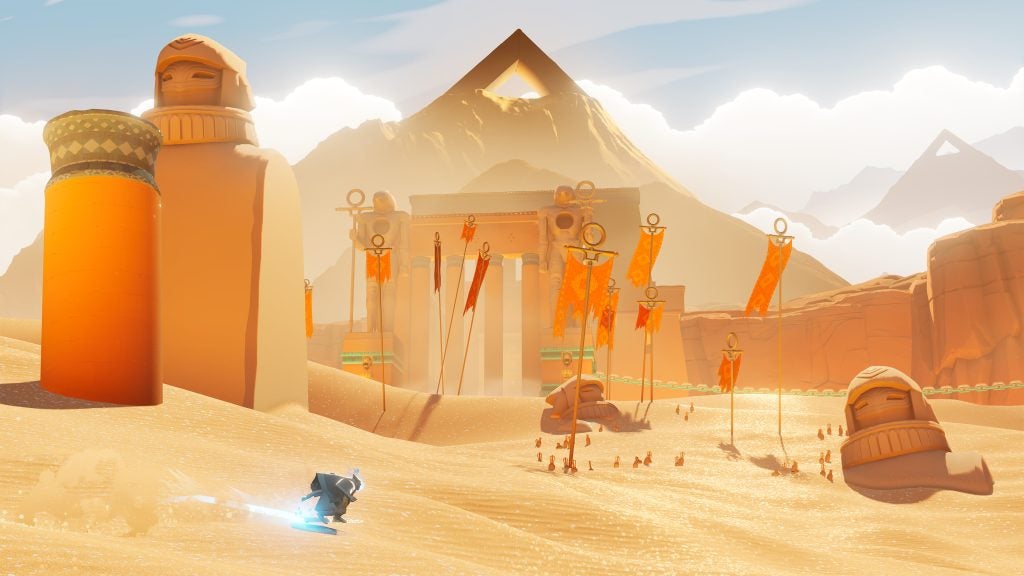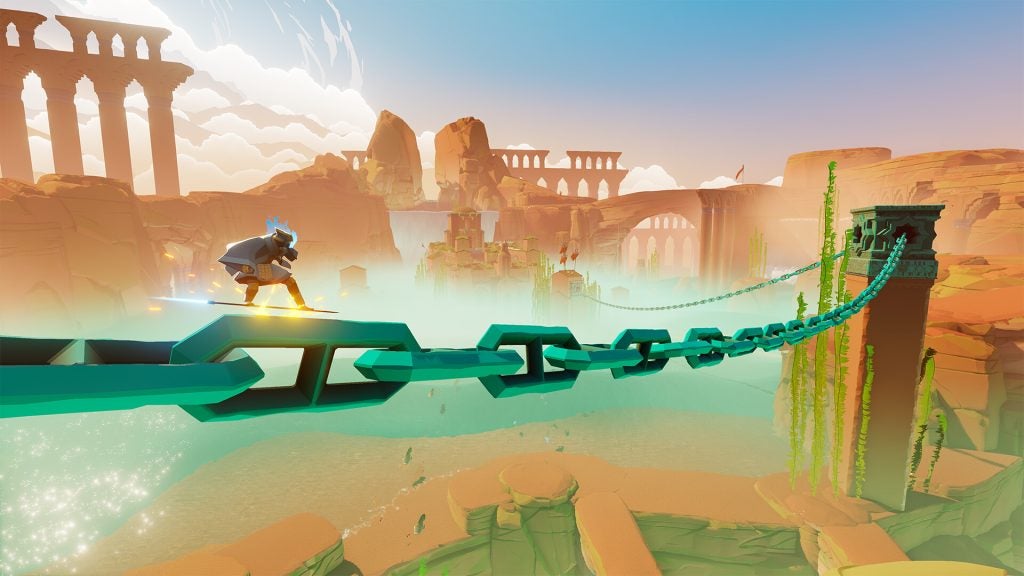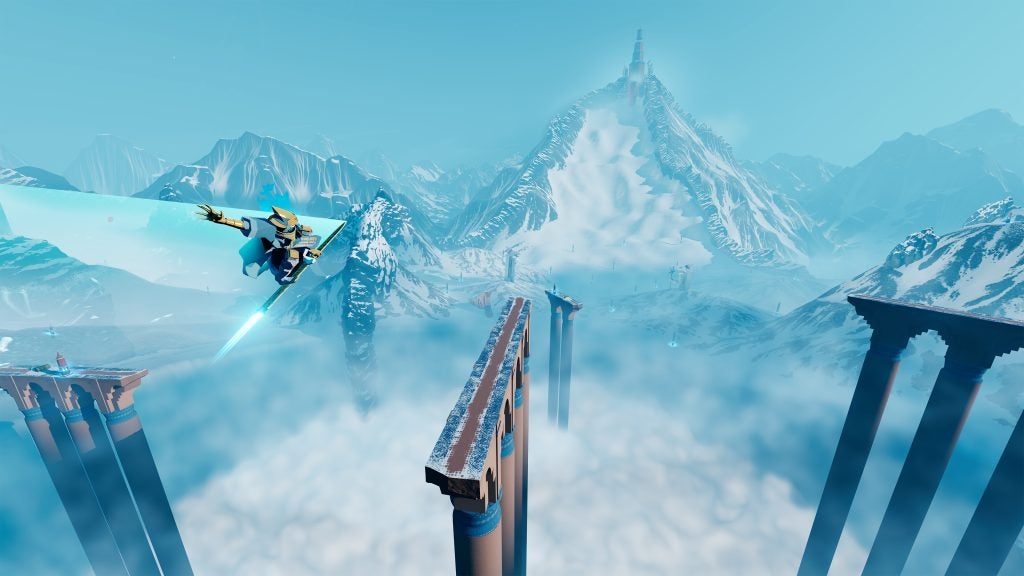Sword of the Sea is a delightful surprise, coming out of seemingly nowhere in a year that has already been full of surprises. I’m kind of shocked there hasn’t been more buzz about this game given how incredibly beautiful it is and how relaxing and fun the gameplay is right from the start, not to mention that it’s easily Giant Squid’s best game to date, but hey, I don’t write the headlines or control where people turn their attention. All I can do is plead with you to take a look at Sword of the Sea and give it a shot because it seriously deserves your time.
Right out the gate, Sword of the Sea has major Journey vibes, and that’s not an accident given that Giant Squid’s art director worked on Journey while he was at Thatgamecompany. In many ways, Sword of the Sea feels like a spiritual sequel to Journey given the expansive desert environments of the first major area, and a lot of shared design language in the game’s architecture, symbols, major landmarks, and overall visual style. It’s a not-so-subtle indicator that, hey, maybe you’re playing in a similar world, but also what if we tried some other stuff here too?
So imagine you take the beauty of Journey and it’s world, crank up the visual fidelity to match modern standards, lean in even harder on the exploration-as-gameplay mechanics, and also it’s actually a skateboarding game where you are shredding dunes and getting massive air off of tiled half-pipes and doing spin tricks off of giant floating bouncy jellyfish? Yeah, that’s got your attention now, doesn’t it?
Traversal is a joy, and it’s a brilliant way to make jaunting around the game’s frankly gigantic spaces significantly more fun. Your skateboard is actually a sword, and it floats rather than having wheels, but we all understand what’s happening here. You can call it skate-swording if you want. You’re on this sword, and you’re zipping around the desert on it, doing jumps and tricks and just trying to find your way around the expansive sandy ruins laid before you, and then stuff gets really weird when you start activating glyphs.
The sand flows like water in most areas, and even undulates and exhibits wave physics like water, and it turns out that’s because there’s an entire ocean (or sea, I guess?) underneath the surface that the sand is somehow magically laid on top of. And when you start to uncover that ocean, you are treated to an outpouring of beautiful marine life above and below the surface, as you realize your quest to restore the the lost ocean beneath. Along the way you collect glittering golden pyramid trinkets that serve as currency you trade to a mysterious figure in a shawl who rewards you with expanded trick capabilities. And then you shred some more.

There is so much DNA of the team members’ previous outings in every aspect of Sword of the Sea; the desert and oceanic environments, the mid-air streams of marine and plant life that harken back to both ABZŪ and even Flower, the player’s primary form of interacting with statues and relics coming in the form of harmonic resonance. Mysterious runes and inscriptions and landscapes that feel as though they have fallen out of an impossible space, the likes of which can only exist in dreams. It’s a visual feast, and it feels wonderful to get lost in and explore every nook and cranny looking for hidden treasures.
I would spend hours upon hours in this world if I could, and at almost every turn there is something new and exciting to explore, some new secret to uncover, some beautiful new transformation to the environment to behold. It is brain candy, an almost uninterrupted stream of dopamine and wonder that is so easy to get lost in. I cannot stress enough how utterly beautiful Sword of the Sea is; the way it presents its landscapes with such richness and clarity is stunning, and it really makes excellent use of art direction and art style for beauty over photo-realism, which would only serve to detract from the experience.
It is precisely because Sword of the Sea eschews realism in favor of artistry that it is so gorgeous, and that its impossible vistas can feel breathtaking. It’s an artistic achievement on so many levels, and the fact that they let you explore by tearing around at high speeds and doing sick grabs and spins and tricks is just the cherry on top. It’s an inspired choice, and a great example of how much good comes from prioritizing gameplay that just feels damn good.
Sword of the Sea remixes familiar elements from its own ancestry with some new ideas from totally different genres to create something new and refreshing. It’s a low stakes, high reward experience that pulls you right out of your seat and draws you into this strange, wondrous place where you can’t help but lose yourself in your quest to reinvigorate the world through the power of surf-skate-boarding. If that isn’t punk, I don’t know what is.
A Steam code was provided by the publisher for review purposes



